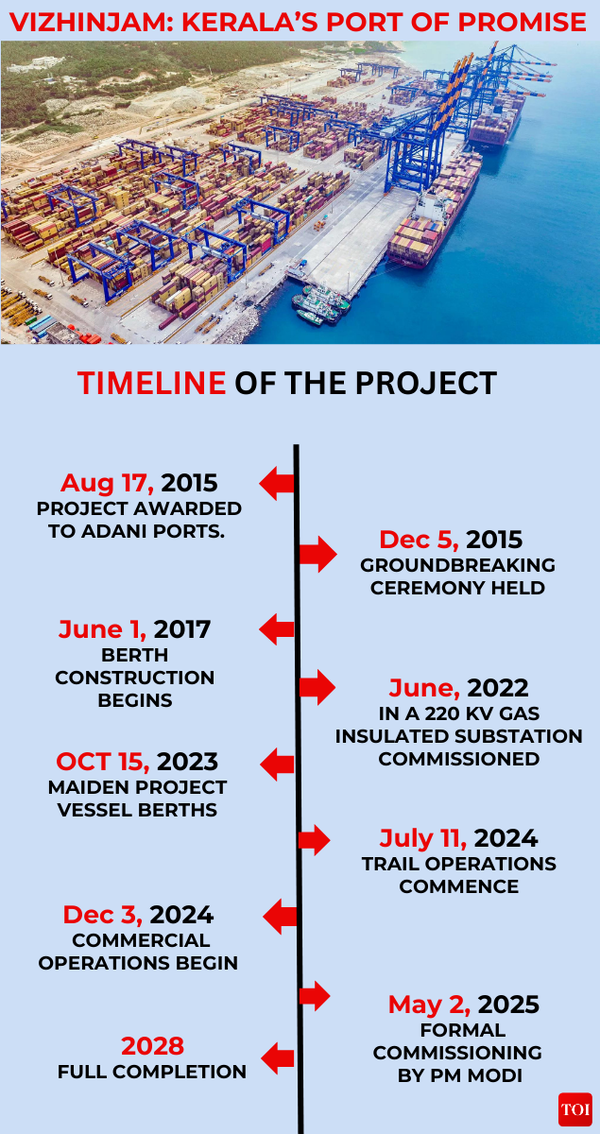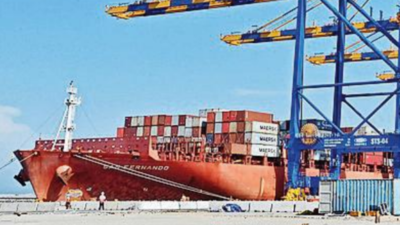PM Modi to inaugurate Vizhinjam Seaport: 10 things to know about India’s first transshipment hub

Prime Minister Narendra Modi is set to inaugurate the Vizhinjam International Deepwater Multipurpose Seaport on today. Located in Thiruvananthapuram, Kerala, the port is billed as India’s first dedicated transshipment facility and is expected to significantly reduce the country’s dependence on foreign ports, especially for container handling.
Developed at an estimated cost of Rs 8,867 crore under a public-private partnership with Adani Ports and SEZ Ltd., the port boasts cutting-edge infrastructure and a strategic location close to vital international shipping lanes.
With its commissioning, Vizhinjam positions India as a new maritime gateway in South Asia, expected to rival major ports like Colombo and Dubai. Its natural depth of nearly 20 metres and proximity to global shipping routes make it ideally suited for large container vessels. The port has already demonstrated its operational capabilities, with trial runs beginning in July 2024 and over 285 vessels docking before its formal inauguration. It is also the first semi-automated port in the country and is equipped with an AI-powered vessel traffic management system developed in collaboration with IIT Madras.

Kerala chief Minister Pinarayi Vijayan had earlier described the project as a historic investment by the state, which contributed two-thirds of the total cost. “This is not merely a port; it marks the beginning of a new era in India’s maritime trade,” he said.
10 key points about the Vizhinjam Port Project:
- India’s first transshipment hub: Vizhinjam is the first port in the country dedicated to transshipment, aiming to reclaim a large share of cargo that currently gets routed via Sri Lanka’s Colombo port.
- Strategic location: Situated just 10 nautical miles from key international shipping routes, it is ideally located for connecting East and West maritime trade.
- Massive state investment: The Kerala government has borne two-thirds of the total cost, including funding for the 2.95 km breakwater.
- Advanced infrastructure: The port includes a container ship berth of 1,800 metres and container handling capacity of 1.5 million TEUs annually in Phase 1.
- Technological edge: It features semi-automation, remote-controlled quay cranes, and India’s first AI-powered Vessel Traffic Management System.
- Global integration: Vizhinjam is now part of the MSC’s Jade Service route, connecting Singapore to Europe, marking a key milestone in India’s maritime ambitions.
- Phase 2 expansion: By 2028, Phase 2 will extend the berth by 1,200 metres, reclaim 77 hectares of sea using dredged material, and increase total capacity to 3 million TEUs annually.
- Connectivity boost: The port will be connected via NH 66 and a new railway link, and Kerala’s first cloverleaf interchange is being developed to handle future logistics traffic.
- Environmental and social concerns: Local fishermen have raised concerns over navigational risks and the potential submergence of 15 nearshore reefs, with calls for a comprehensive ecological impact assessment.
- Drawbacks to address: The port currently lacks dedicated facilities for cruise ships, crew change, passenger movement, and liquid fuel bunkering, which may limit its versatility in the short term.




